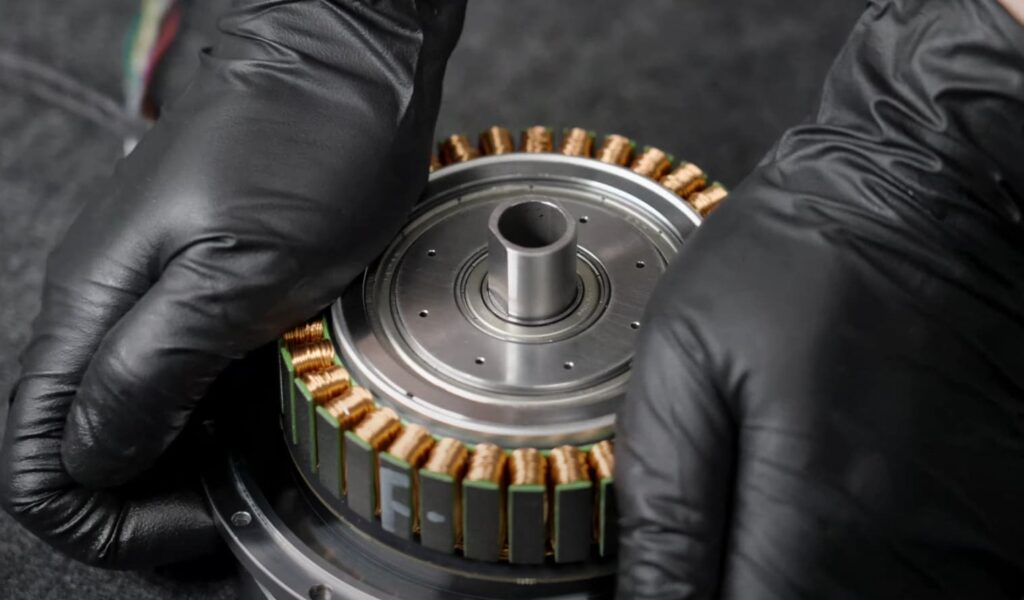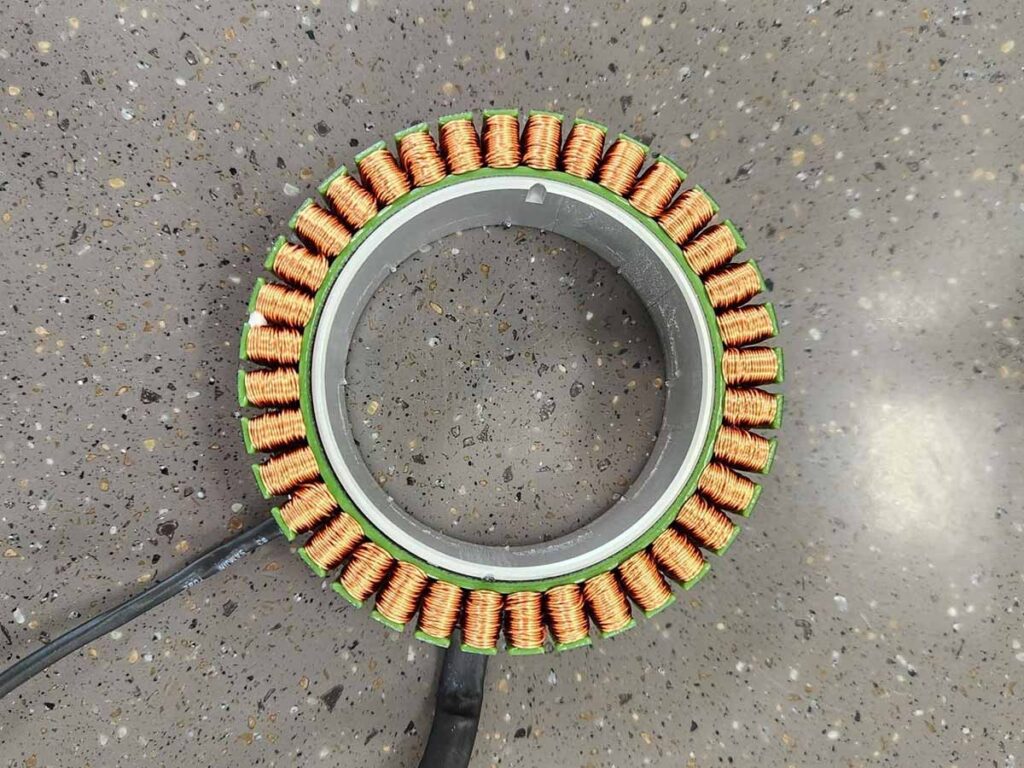If you have an interest in robotics engineering, you have probably heard of the QDD Actuator, short for Quasi Direct Drive Actuator. In 2019, the MIT Biomimetic Robotics Lab introduced the “Mini Cheetah” robot, which made headlines as the world’s first quadruped robot to perform a backflip. In that short demonstration video, many engineers were amazed by how quickly the robot’s joints reacted and how stably it landed. The key component that made such impressive athletic performance possible was none other than the QDD Actuator.
The QDD Actuator was created by redesigning BLDC motors, which had been commonly used in drones, and integrating them with low gear ratio planetary reducers to deliver stronger output torque. This configuration was aimed at achieving both rapid response and high torque — the two essentials for agile robot movement. The reason agility is so important for robots is simple: productivity. In everyday scenarios, there are almost no situations where a robot needs to perform a backflip. However, a robot that possesses that level of agility can handle a wide variety of everyday tasks with ease.
The same applies to humanoid robots. To replace human labor in production environments and maintain high operational efficiency, they need sufficient speed and responsiveness. If their movements are slow, production efficiency inevitably suffers.
QDD (Quasi Direct Drive)
QDD uses a design in which a small reducer is mounted inside a hollow-shaft motor. This configuration effectively reduces the actuator’s overall volume while increasing torque density. The dynamic movement demonstrated by MIT’s “Mini Cheetah” was also made possible thanks to this Quasi Direct Drive approach.
The direct drive method, often referred to as a DD motor, delivers high output torque using the motor alone and allows a load to be mounted directly onto it. However, it typically operates at a relatively low rotational speed (RPM). In modern quadruped and humanoid robots, motion requirements demand both fast, agile torque delivery and strong force. Achieving this level of performance is difficult with the low RPM of a DD motor alone, especially when combined with the practical constraint of cost.
For example, implementing forward-backward, lateral, and rotational movement in the shoulder joint of a humanoid robot requires at least three actuators. Adding actuators for the elbows, wrists, thighs, and leg joints brings the total to over 20 actuators for a single humanoid. Quadruped robots also typically require 12 or more actuators.
To make robots commercially viable, cost reduction is essential, while also ensuring more agile movement and load-bearing capabilities that meet industrial standards. In this regard, the conventional direct drive approach has clear limitations, and the technology gaining attention as an alternative is the QDD actuator.

What is a Hollow Shaft Motor?
As the name suggests, a hollow shaft motor has a central section that is empty. Unlike conventional motors, its hollow core is designed to allow wires or cables to pass through, or to house components such as a reducer directly inside. This structure significantly improves space efficiency within a system while helping to reduce the overall size and weight of the equipment.
Depending on the rotor’s position, hollow shaft motors can be divided into two types: the inner rotor type, where the rotor spins inside the stator (frameless inner rotor), and the outer rotor type, where the rotor spins around the outside of the stator (frameless outer rotor). Both types feature a frameless design without a housing, allowing them to be flexibly integrated into a wide range of mechanical systems.
In the robotics industry in particular, hollow rotor designs hold exceptional value. Comprising only the stator and rotor without a housing, these components are central to the development of QDD (Quasi Direct Drive) actuators. They enable smaller and lighter drive modules, support compact part designs tailored to product requirements, and align perfectly with the modern robotics trend that prioritizes agility and lightweight construction.

Features of QDD Actuators
While there are many performance factors that matter in a robot actuator, some of the most important are weight, torque density, backdrivability, and torque itself. Backdrivability refers to the degree to which the input shaft rotates when the output shaft is driven in reverse, and it has a direct impact on a robot’s agility.
Take MIT’s “Mini Cheetah” as an example. During a backflip, when its legs make contact with the ground, a large impact load is transmitted to the joints. In humans, cartilage in the joints absorbs such shocks, but robots lack such a structure, meaning the actuator must absorb the load directly. If the actuator has excellent backdrivability, it can disperse the impact, reducing the likelihood of damage or failure. This function is also valuable in situations where a human operator needs to manually move a robot joint.
Torque density is another critical metric. It measures how efficiently torque can be generated within a given volume, a factor closely tied to the robotics industry’s key trend of lightweight design. As technology evolves rapidly, actuator designs are also changing quickly, and one approach that meets these demands is the QDD actuator.
Quasi Direct Drive offers faster responsiveness by installing a reducer directly inside a hollow-shaft motor. Unlike the conventional setup, where the motor and reducer are connected in series, this design integrates the reducer within the rotor itself, allowing for a thinner profile. As a result, it can deliver sufficient output torque even at higher RPMs. Thanks to these characteristics, QDD actuators are highly anticipated in fields such as quadruped robots, humanoid robots, and collaborative robots, where agile motion is essential.
However, QDD actuators are not without limitations. Embedding a reducer inside a hollow-shaft motor makes achieving high gear ratios challenging. Most QDD designs use planetary gear reducers, which are efficient but difficult to configure for gear ratios above 10:1 in a single stage. Achieving higher ratios requires a two-stage or more complex design, which increases both the size of the reducer and the actuator’s overall thickness. This, in turn, can be disadvantageous for lightweight construction and torque density.

Could QDD Use a Different Gear?
Thinking back to the QDD actuator used in MIT’s “Mini Cheetah,” we began to ask ourselves this question. Planetary gear reducers are certainly advantageous for low gear reduction, offering both cost efficiency and mechanical efficiency. However, they still have inherent limitations when it comes to fully resolving durability issues caused by gear wear and reducing operational noise. So, how could we overcome this challenge?
After extensive research and testing, we reached a clear conclusion: prioritize durability and torque improvement, even if it means sacrificing some speed. This decision led to the creation of the BCSA series hollow-shaft actuators that incorporate a cycloidal gear mechanism.
We have observed a gradual decline in the demand for high gear reduction ratios in the robotics industry. In response, we developed the BCSA V4 robot actuator, offering lower gear ratios of 11:1 and 15:1. The BCSA V4 features a hollow-shaft design with a cycloidal gear structure that delivers stable torque output and exceptional durability even at low reduction ratios. The gear profile distributes impact loads over a larger contact area, significantly reducing wear and noise, which in turn minimizes performance degradation over long-term use.
One of its defining features is the separation of the reducer and motor. This design allows for easier optimization of each component and makes maintenance and replacement more efficient. Weight reduction was also actively considered during the design stage, eliminating unnecessary mass and giving robot designers greater flexibility. With the reducer positioned inside the rotor, the overall thickness is reduced, making it easy to integrate into tight spaces.
The BCSA V4, available in 11:1 and 15:1 configurations, supports both high-speed motion and smooth torque control. Its high backdrivability allows it to absorb external shocks effectively, making it well-suited for robots designed to interact safely with humans. These characteristics make it a versatile solution for various platforms, including quadruped robots, humanoids, and collaborative robots.

In Closing
The robotics industry is evolving rapidly, and drive technology remains a key force behind this transformation. QDD actuators offer an innovative solution that delivers both agile motion and high efficiency, but they are not the perfect answer for every scenario. To overcome those limitations and expand applicability, we developed the BCSA V4 series based on cycloidal gear technology.
The BCSA V4 is a next-generation robot actuator that delivers stable torque, outstanding durability, lightweight construction, and maintenance-friendly design even at low gear ratios. Beyond simply enhancing performance, it provides a technological foundation that broadens the scope of robot design and applications, unlocking new possibilities.
The BCSA V4 series is scheduled for release in August 2025, and Bon Systems will continue to develop drive solutions that meet the performance and reliability demands of both industrial and research environments. In the next leap forward for the robotics industry, the BCSA V4 will be at the center. (Check out the BCSA V4 Series, launched on August 29, 2025)
FAQ
Q. What is a QDD Actuator (Quasi Direct Drive Actuator)?
It is an actuator used in MIT’s 2019 “Mini Cheetah” project. The design incorporates a small reducer inside a hollow-shaft motor, reducing overall volume while achieving high torque density. It offers fast response and high backdrivability, making it well-suited for robot designs that require agile and precise movements.
Q. What is a Hollow Shaft Motor?
A hollow shaft motor is a motor with an empty central section, allowing wires or cables to pass through or enabling the integration of components such as a reducer. Depending on the rotor’s position, it can be classified as an inner rotor type (frameless inner rotor), where the rotor spins inside the stator, or an outer rotor type (frameless outer rotor), where the rotor spins around the outside of the stator. Thanks to its frameless design without housing, it enables lightweight construction and compact component design, making it a popular choice in drive systems where agility and reduced weight are essential, such as in QDD actuators.
Q. Why is a planetary reducer used in Quasi Direct Drive?
To achieve fast response and agile torque control at low gear ratios, a planetary gear reducer is ideal due to its simple structure, suitability for low-ratio designs, and high efficiency. These characteristics allow QDD actuators to maintain both compact, lightweight construction and cost efficiency.
Q. What is the difference between QDD and BCSA V4?
QDD (Quasi Direct Drive) uses a low gear ratio planetary reducer inside a hollow-shaft motor to reduce volume while delivering quick response and agile torque control. Its strengths lie in its simple structure and cost efficiency, but it has limitations such as gear wear, noise, and difficulty in achieving high gear ratios. In contrast, the BCSA V4 applies a cycloidal gear structure and a separated reducer–motor design to improve durability, torque performance, weight reduction, and maintenance convenience. Even at low gear ratios (11:1, 15:1), it provides stable torque and high backdrivability, making it adaptable to a wide range of robot platforms.
Q. When will the product be available for purchase?
The BCSA V4 series is scheduled for release in August 2025, and purchase inquiries and orders will be available through the official website at launch.
